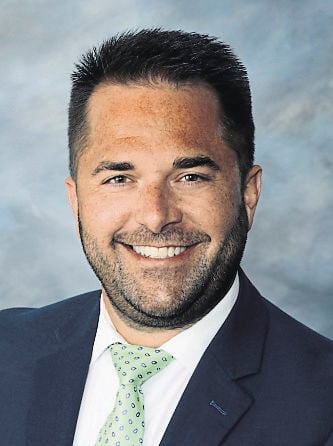The deadline for submitting individual income tax returns is just under two months away, but area tax professionals say the season is already in full swing.
Since the filing period opened Jan. 27, owner Dennis Buchheit said Buchheit Tax Service in Dubuque has already helped over 1,500 clients file their returns and there are many more appointments on the books for the next two months.
With other area tax professionals seeing a similar influx, Buchheit urged local residents to be proactive.
“I wouldn’t hesitate to reach out at this point,” Buchheit said. “I always tell clients that we’re ready when they’re ready.”
To help area residents navigate the ongoing tax season, the Telegraph Herald spoke with area experts to get the tips and tricks needed to ensure a smooth filing process.
When are taxes due in 2025?
The federal personal income tax filing deadline is April 15. That deadline is the same for both Wisconsin and Illinois state tax filings, though Iowans have until the end of April to file their state income tax return.
If you need more time to file, you can apply for a six-month extension on your federal tax filings by filling out and returning Form No. 4868. Note, however, that an extension of time to file is not an extension of time to pay.
Tracking your refund
Federal IRS refunds could take up to 21 days for an e-filed return. Returns sent by mail could take four weeks or more. You can check your federal tax refund status through the “Where’s My Refund?” tool found at irs.gov/refunds.
Iowa has its own Where’s My Refund? tool on revenue.iowa.gov to check the status of individual income tax returns. You will need to know your Social Security number and the amount of your refund.
Similar tracking systems are available for state returns in Illinois and Wisconsin. Illinois taxpayers can track their returns at tax.illinois.gov/individuals, and Wisconsin filings can be tracked online at tap.revenue.wi.gov/RefundStatus.
Changes, credits of note
This year marks the first that Iowa’s state income tax will drop to a 3.8% flat rate for all Iowa taxpayers, down from a top income tax rate of 5.7% in 2024. The elimination of tax brackets and adjustment in rates are a result of several rounds of tax cuts pushed by Republican lawmakers.
Iowans do not need to take any independent action to take advantage of the new rates, and no additional steps are required while filing, said Larry Zettel, a local volunteer with the IRS Volunteer Income Tax Assistance program.
“The rates have changed a bit, but as far as the kinds of things that are taxable or the kinds of documents that people need, those are pretty much the same,” Zettel said.
VITA is a no-cost tax service geared toward residents of low or moderate income, residents with disabilities and those who speak limited English. It’s available through Hawkeye Area Community Action Program in Dubuque, Delaware and Jackson counties.
Honkamp, P.C. shareholder Josh Miller encouraged area residents to look into new and existing tax credits and deductions.
For example, the deduction limit for contributions to an Iowa 529 plan increased this year from $3,785 to $5,500 per beneficiary. A 529 plan is a type of investment account used to save for qualified education expenses.
The tax-deductible limit applies to each individual’s contributions to a single beneficiary account, Miller said, meaning an Iowa parent with two children can contribute to each of the children’s accounts and deduct a total of $11,000.
“That’s definitely something we want people to be aware of and take advantage of if they can,” said Miller, who leads Honkamp’s tax department. “It’s an easy way to stock up money and get a little bit of an income tax incentive at the same time.”
In terms of tax credits, Buchheit said home energy tax credits backed by the Inflation Reduction Act of 2022, for example, have proved particularly popular this year.
Under the federal program, individuals who make energy improvements to their homes in any state in the U.S. are eligible to receive tax credits for a portion of qualifying expenses.
For improvements made in 2024, the credit equals up to 30% of qualifying expenses up to a maximum of $1,200.
“We’ve seen everything from solar projects to heating and cooling,” Buchheit said. “It really seems like there’s been a pretty big push to get some of those projects done last year.”
For the radar
Miller and Buchheit both noted that while the current tax season has been running smoothly, some clients have expressed questions or concerns about potential regulatory changes under the new presidential administration.
Those questions range anywhere from President Donald Trump’s campaign musings on not taxing overtime pay or tips to potential impacts to the types and payout levels of new and existing tax credits.
Miller advised area residents to keep abreast of tax-relevant developments and to reach out to their preferred tax professional if they need further clarification or advice.
“In regard to 2025 and beyond, there’s a lot of things in motion that could affect (people’s taxes),” he said. “That means there’s some question marks.”



